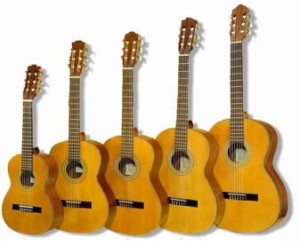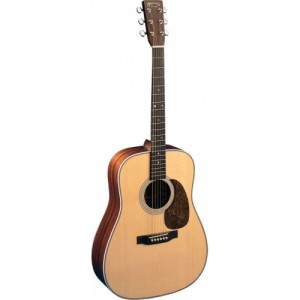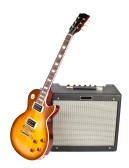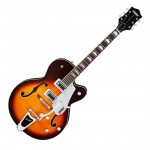How long does a tank of fuel last? Well, it depends on how much you drive the vehicle. Likewise, the hours you put into learning your instrument will be the most determining factor in how long it will take you to play it. Below are a number of observations that will help you get a better grasp of the timeline involved.
To what standard?
 Like sport, academia, languages and artistry, there are different levels or standards one can reach. In maths a person can learn to add, subtract, multiply, divide and stop learning maths with few daily arithmetic problems. Likewise, a person could learn a few simple chords on the guitar and be happy to play some of their favorite songs in that fashion. However, neither of these would call themselves either a mathematician or a musician.
Like sport, academia, languages and artistry, there are different levels or standards one can reach. In maths a person can learn to add, subtract, multiply, divide and stop learning maths with few daily arithmetic problems. Likewise, a person could learn a few simple chords on the guitar and be happy to play some of their favorite songs in that fashion. However, neither of these would call themselves either a mathematician or a musician.
So, when someone asks how long it takes to learn the first question they need to address is what standard they wish to reach. Naturally, it takes a lot longer to competently play an elaborate Jimi Hendrix piece than it does to strum an Irish Ballad.
The Basics
Very few disciplines can be accomplished without mastering the basics first. Unfortunately, this is not the most exciting part of guitar playing but spending enough time on the basics is essential to becoming an accomplished player later on.
Like any new experience, the first few weeks of learning to play feels awkward. Your fingers need time to adjust to a new way of moving and the muscles are being exercised in a different fashion which can be frustrating. Getting over this initial period of mastering the basics is the toughest part of learning any instrument, once you’ve the hours put in and the basics learned then the real enjoyment begins.
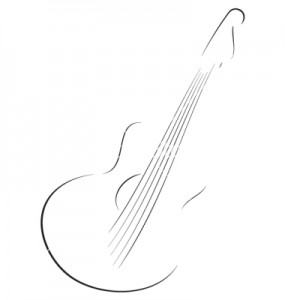 Time
Time
Learning six to ten chord shapes and some basic strumming rhythms is what can be considered the basics. The most time consuming aspect of this is changing between the chords fluently but with enough effort this will become second-nature. Allowing for eventualities; a person with no previous musical experience willing to practice for a minimum of forty-five minutes per day should reach this standard within four to seven months. This standard will allow the player to strum along to a large majority of ballads and pop songs but further development would be required to play other styles. Naturally, making such projections is an inaccurate discipline given that every person is different with varying levels of comprehension and competence; however, there are always those who look for a time frame.
Tips
- Take the guitar out of its case and leave it where you’re likely to encounter it. If it’s easily accessible, you’re more likely to pick it up and start strumming.
- Try not to view playing the guitar as practice or a chore, rather look upon it as something you like to do and choose to do voluntarily.
- Practice the chord shapes while watching TV. You don’t have to strum the guitar or make noise while practicing your chord shapes.
- Don’t try to learn too much in a small amount of time. Better to fully-learn a small amount than half-learn a larger amount. Master two chords before adding a third.
Remember it’s a slow process. It takes time to build and no-one can make an instrument sound good in a week. Happy playing!
DM

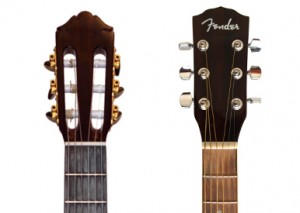
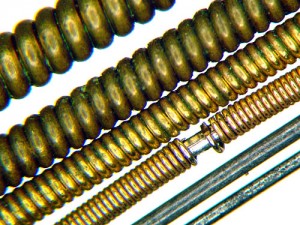 Heavier gauge strings boast more sustain, richer tone, more volume and a larger bass response but also can be less pliable due to greater tension, can sit higher off the fret board and can be harder on the fingers.
Heavier gauge strings boast more sustain, richer tone, more volume and a larger bass response but also can be less pliable due to greater tension, can sit higher off the fret board and can be harder on the fingers. 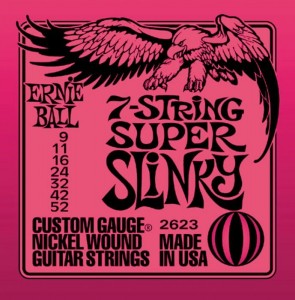 String sets will always have the gauge written on the outside of the packet. Most people use the imperial measurement system and reference the strings from the thinnest one. For instance this pack starts from 0.9 of an inch and works its way up to 0.52 of an inch (thinnest to thickest). In short terms, this packet of strings are called ‘nines’ after the thinnest string.
String sets will always have the gauge written on the outside of the packet. Most people use the imperial measurement system and reference the strings from the thinnest one. For instance this pack starts from 0.9 of an inch and works its way up to 0.52 of an inch (thinnest to thickest). In short terms, this packet of strings are called ‘nines’ after the thinnest string. 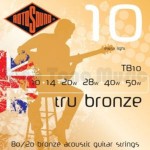 Acoustic steel strings generally work as follows:
Acoustic steel strings generally work as follows: 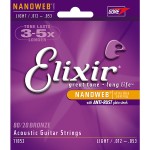 fresher and more vibrant for longer. This is done via a thin plastic coating on the strings to prevent dust and grit embedding between the notches of the wound strings. This residue prevents the string from vibrating and makes it sound dead ore lifeless. Coated strings are extremely efficient and work very well but can cost up to three times as much as regular strings.
fresher and more vibrant for longer. This is done via a thin plastic coating on the strings to prevent dust and grit embedding between the notches of the wound strings. This residue prevents the string from vibrating and makes it sound dead ore lifeless. Coated strings are extremely efficient and work very well but can cost up to three times as much as regular strings.
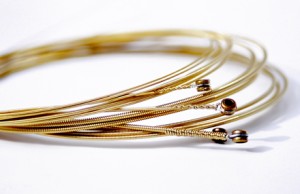 How frequently you should change your strings is simply down to how often you play your guitar. A good reference point is to change them if: (i) they sound dull or lifeless, (ii) they are quite dirty or (iii) you find the guitar hard to tune or it looses tune quicker that usual.
How frequently you should change your strings is simply down to how often you play your guitar. A good reference point is to change them if: (i) they sound dull or lifeless, (ii) they are quite dirty or (iii) you find the guitar hard to tune or it looses tune quicker that usual.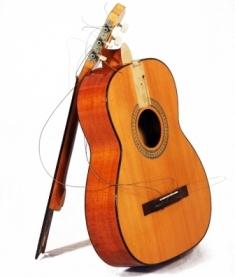 The last article addressed the differences between guitars – mainly nylon and steel strung – and this article shall provide a few pointers to watch out for when buying a guitar. Naturally, the quality of instrument will be reflective of price and that’s essential to keep in mind but there are a number of factors you want to make sure you are aware of before you purchase.
The last article addressed the differences between guitars – mainly nylon and steel strung – and this article shall provide a few pointers to watch out for when buying a guitar. Naturally, the quality of instrument will be reflective of price and that’s essential to keep in mind but there are a number of factors you want to make sure you are aware of before you purchase. 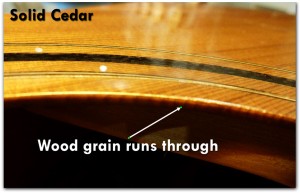
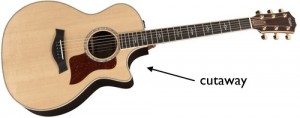 a curve cut in to the lower shoulder on the guitar’s body. Purists argue that this negatively affects the sound of a guitar but the differences are often too subtle to be noticeable.
a curve cut in to the lower shoulder on the guitar’s body. Purists argue that this negatively affects the sound of a guitar but the differences are often too subtle to be noticeable. 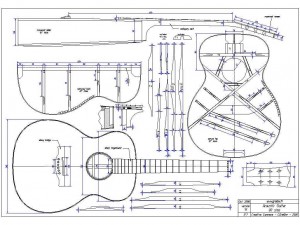 Regardless of the materials that a guitar is constructed from; build quality and setup are the two main factors that determine the quality and playablity of an instrument.
Regardless of the materials that a guitar is constructed from; build quality and setup are the two main factors that determine the quality and playablity of an instrument.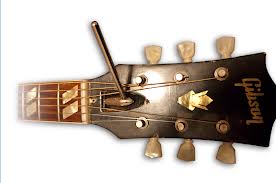 Some mass produced instruments will be relatively OK to play straight out of the box. However, they often require some degree of setup to bring them up to standard and many reputable guitar dealers will carry out a full review and setup before the instrument leaves the shop. Some will request that you bring the guitar back after a few months for a second setup as new guitars take some time for the timber to settle or to become ‘played in.’
Some mass produced instruments will be relatively OK to play straight out of the box. However, they often require some degree of setup to bring them up to standard and many reputable guitar dealers will carry out a full review and setup before the instrument leaves the shop. Some will request that you bring the guitar back after a few months for a second setup as new guitars take some time for the timber to settle or to become ‘played in.’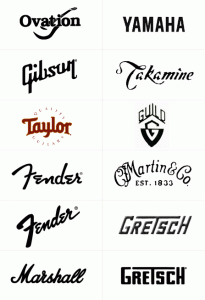 Entering the market at this level and below are manufacturers like Cort, Tanglewood and Yamaha. These brands produce instruments with a relatively high quality to price ratio and are a shrewd choice when looking to get the best for what you have. While they may not hold their value as well as the more traditional brands, they will provide you with a very playable instrument for a lot less.
Entering the market at this level and below are manufacturers like Cort, Tanglewood and Yamaha. These brands produce instruments with a relatively high quality to price ratio and are a shrewd choice when looking to get the best for what you have. While they may not hold their value as well as the more traditional brands, they will provide you with a very playable instrument for a lot less. 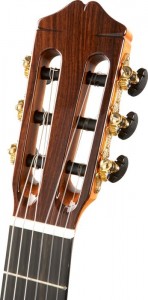
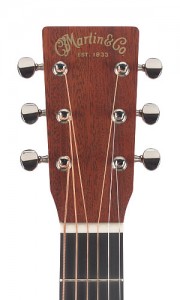
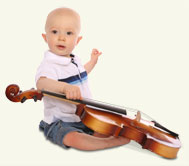 There’s no comprehensive answer to this question rather a number of observations which may help point you in the right direction. First and foremost there is little substitution for early exposure to music or musical instruments. Like sport or academia, interest and intuition can start as early as the individual becomes aware of it and some positive encouragement is always welcome.
There’s no comprehensive answer to this question rather a number of observations which may help point you in the right direction. First and foremost there is little substitution for early exposure to music or musical instruments. Like sport or academia, interest and intuition can start as early as the individual becomes aware of it and some positive encouragement is always welcome.